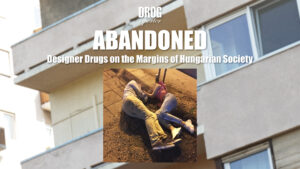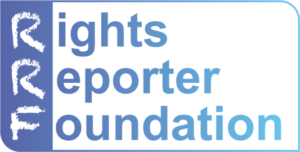Damian Sobczyk is a Polish videoblogger and a drug user activist whose mission is to help young people to reduce the risks of drug use. His channel had 137,000 subscribers when YouTube decided to ban it without any concrete explanation. Read Drugreporter’s interview, conducted by Adam Stasiak!
DRUGREPORTER: How did you get involved in harm reduction?
DAMIAN SZOBCZYK: I became interested in the topic of psychoactive substances in college. I wrote my master’s thesis on the drug problem in the European Union. Writing it, I discovered how little material on this subject was available and how many things had to be done in the field of drug policy. We have examples of countries that are good at it and we should follow their examples. I decided to deal with this topic more extensively. I was thinking about publishing a book, but I figured that I would reach more people thanks to new media, in particular through a YouTube channel. For a few years I couldn’t make up my mind if I should do it or not. I was afraid of how this would affect my professional life. My fears turned out to be true because 9 months after the foundation of the channel, when it began to gain popularity, my superiors gave me an ultimatum – either I close the channel, or I have to leave work. They were afraid of losing contracts since their employee was dealing with a controversial topic. I chose to work on the channel then because I believed that its mission is right and socially desirable. Your channel is called “I know my dope” – an interesting choice of name, maybe even controversial for some people in Poland. Could you tell us what your channel is about and who it is directed at?
The channel’s goal is to reduce negative consequences that may result from the use of psychoactive substances, addiction prevention, and supporting a rational drug policy based on world-proven solutions. Young people are the dominant audience among my viewers. 90% of people watching me are 18-35 years old. I think that content can be interesting for everyone because even if someone is not a user, it is very likely that they know such people in their surroundings.
I know you actively engage with your viewers. What are the biggest risks they are exposed to when using drugs?
The drug-free world is a utopia. People have always used drugs and will continue to do so. This is the nature of humans. There is only one thing that changes – depending on time, environment and policy – namely which substances are considered acceptable and thus legal. In our culture, virtually no one calls alcohol or nicotine drugs, and yet they do more harm to society or an individual than many banned substances. When it comes to harm related to illegal substances, if we look at marijuana or psychedelics, the biggest damage to the user can often be that he might go to prison for possession of such substances. Criminalisation is the main cause of a considerable amount of problems. Of course, there are also substances whose consumption is associated with greater risks, such as stimulants or opioids. There, it is particularly important to prevent addiction and take action that will reduce negative consequences. If someone has a problem with substances, he should be offered help, effective therapy – not prison. Often someone’s addiction is only a symptom of other problems in a person’s life.

Today, you are leading the biggest harm reduction channel in Poland, with almost 10 million total views. How do you see the medium you are using, namely video and social media platforms, in relation to harm reduction?
Nowadays it is definitely a very good channel to reach your audience. You have to be where young people are and they are on social media. A large proportion of people prefer to watch a movie than read. There is nothing wrong with that. Movies have more emotions, they are closer to people. They also know that what I convey is checked by me. They have more confidence than in the content they are able to find on various sites on the internet.
I remember one of our first professional encounters – a student carnival in Poznań, where dozens of people were recognising you on the streets and stopping by to talk. How does it feel to be a celebrity influencer, the face of Polish drug users?
It is of course very pleasant to meet people who appreciate your work, support you and share a vision of the world with you. Each of these meetings is very nice and gives a boost of energy for further actions. I never thought that popularity could have such a big impact on life. I meet my viewers in very different places, which means that I can’t feel anonymous virtually anywhere. It also has its drawbacks. It is something that I had to get used to and accept, and at the same time shows how diverse my viewers are in terms of their profession, social status, passion, etc. This clearly shows me that the topic of drugs is universal, and it is impossible to categorise people interested in such matters.
It seems that there are others who think otherwise.
All the time I have to struggle to be able to continue education in this field and I encounter adversities on my way. My Facebook fan page, which was followed by over 14,000 people, together with my Instagram profile was removed at the end of 2017. Due to the lack of an appeal procedure, I had to create a new one. Then I lost the YouTube channel, which after several days, thanks to the support of the community, media, and NGOs, I managed to restore. I am not the only one. At the same time, the Social Drug Policy Initiative (SIN), an organisation focusing on harm reduction and party-working, has also lost its Facebook account. They are currently fighting Facebook in court to restore their profiles.
We have touched upon an important topic. Social media tech giants that promote themselves as open platforms for connecting people, block important, educational and health -promoting content. I remember the words of Mark Zuckerberg after his US tour about the fact that the most what shocked him was the scale of the opioid crisis. His and other platforms’ activity does not help. I know your channel has been removed again. Could you briefly tell us what happened?
First, the video about an app fighting addiction, which I recorded at the request of scientists from the Polish Academy of Sciences was found to be “harmful and dangerous”. Then YouTube removed the entire channel, which had almost 137,000 subscribers and over 9.6 million views, arguing that they do not allow links to drug-selling sites in video descriptions. They did not explain which links were in question. I would never allow myself to post wrong links, I know what responsibility lies with me as a creator. There were no links to illegal products or products that could harm anyone. The channel was removed immediately, without three standard warnings, so I didn’t even have the opportunity to correct anything. If I got the information that YouTube didn’t want some links, even if they did not break the guidelines, of course, I would delete them. I understand that the topic is delicate. Unfortunately, there was no communication there. I received letters of support from many NGOs asking to restore the channel, over 7,000 people also signed petitions on this matter. I hope the channel will come back. If it were otherwise, I would just start it all over again. Like I did on Facebook and Instagram before.
I am sorry to hear that, I know how much work you put into it and how important it is for the community and the fans of your channel. It seems that systematic changes are necessary, and I am very curious about the result of the SIN v Facebook case. In the meantime, thank you very much for the interview, good luck, and I encourage readers to like your Facebook page and sign the petition.
Thank you for the interview!
An interview by Adam Stasiak, Polish Drug Policy Network






